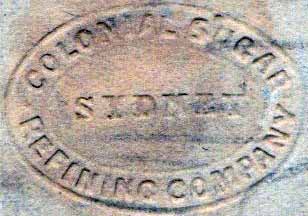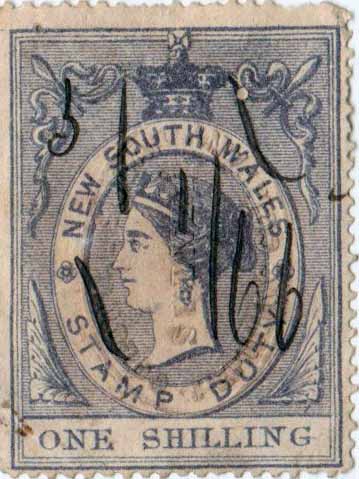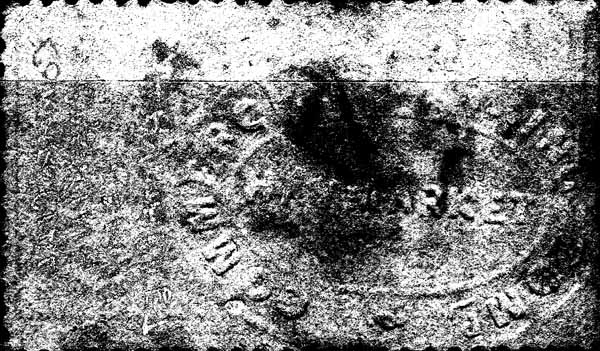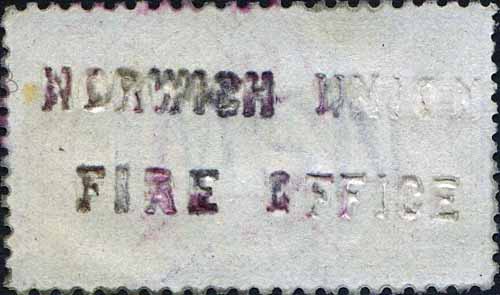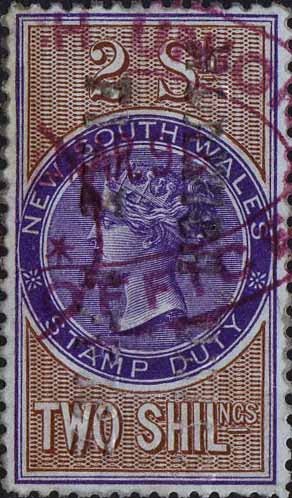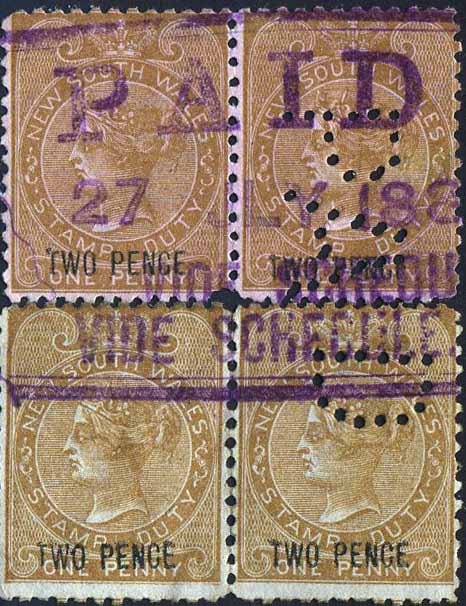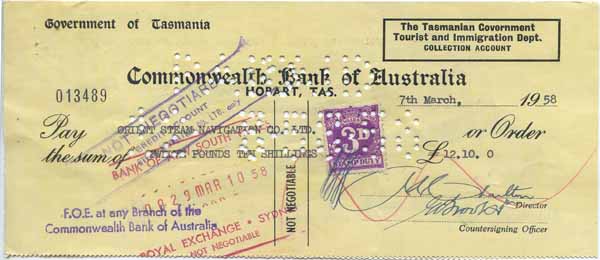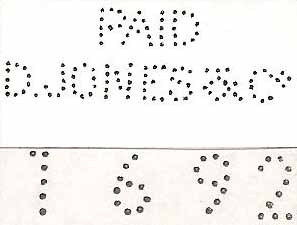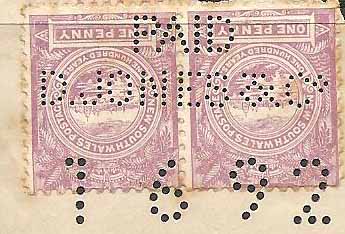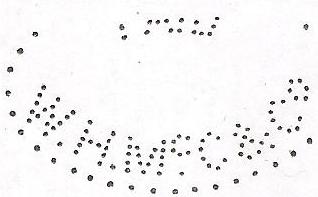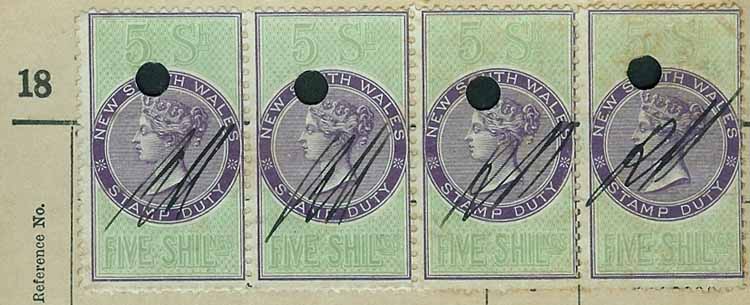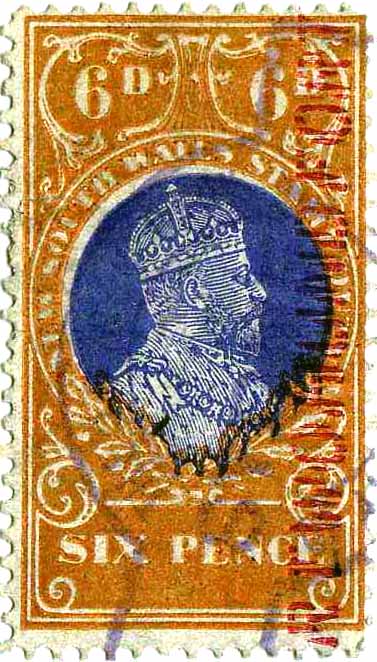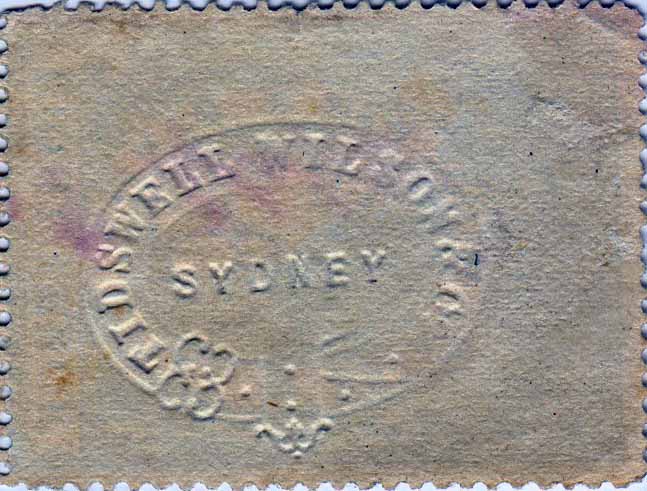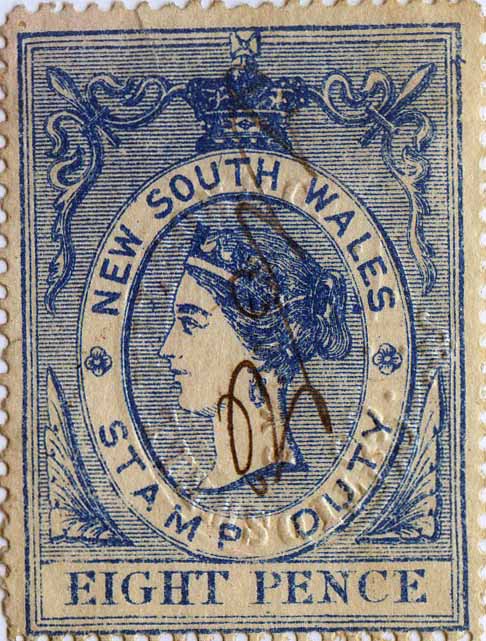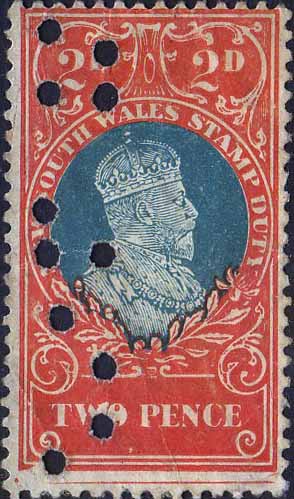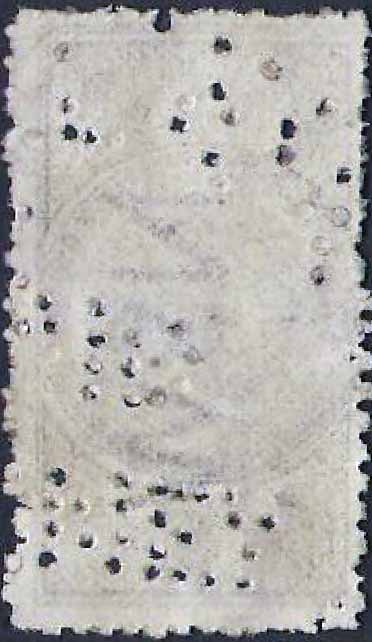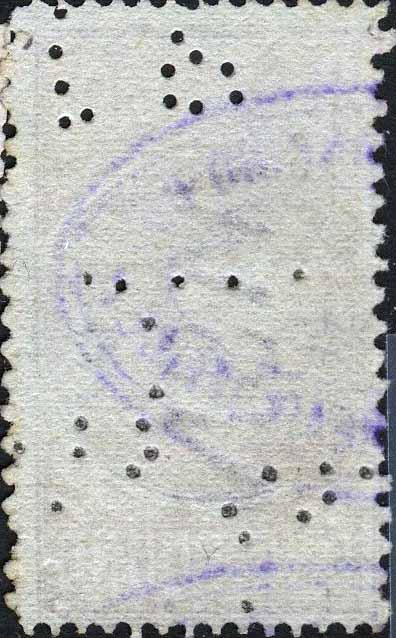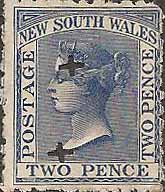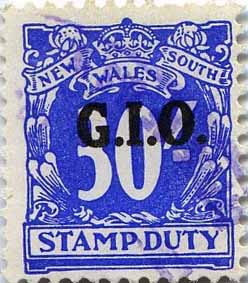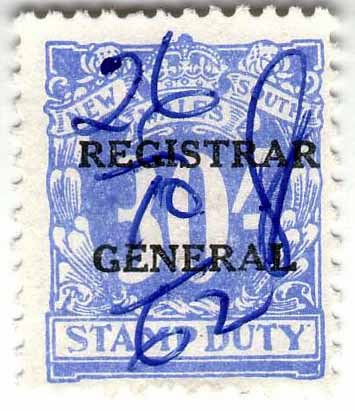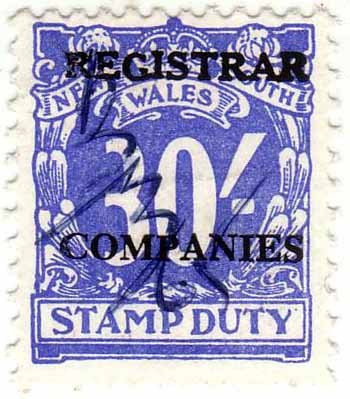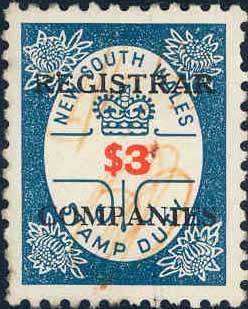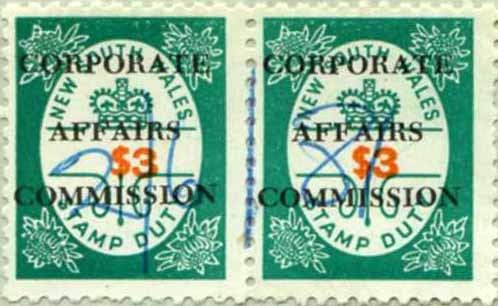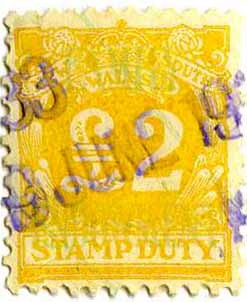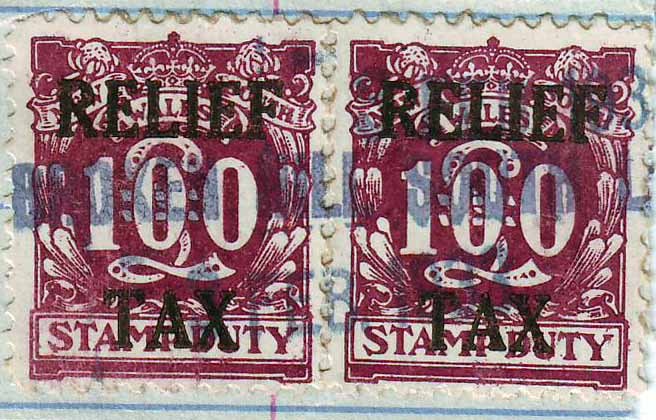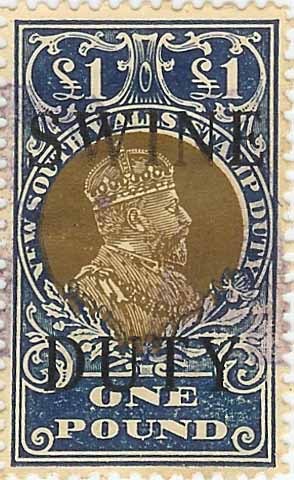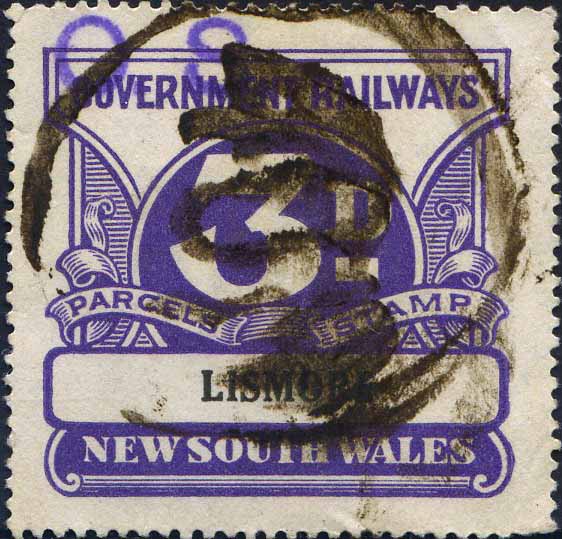|
Private Revenue Perfins of New South Wales An Elsmore Coath production The authors would welcome your comments additions or input into this work A B C D E F G H I J K L M N O P Q R S T U V W Y Other Other -------------------------------------------------------- Section 1 - Other Perfins & Cancelling Devices Section 2 - Commercial Overprints -------------------------------------------------------- ------------------------------------------------------------------------------------------------- ------------------------------------------------------------------------------------------------- Section 1 - Other Perfins & Cancelling Devices ------------------------------------------------------------------------------------------------- ------------------------------------------------------------------------------------------------- COLONIAL SUGER REFINING COMPANY / SYDNEY.a
User: Colonial Sugar Refining Company Ltd (CSR) Sugar Refiner Address: Pyrmont, Sydney, NSW Revenue Use: QV 1865 issue 1/- Rarity Scale: QV 1865 issue 1/- R4 Background: *In 1839 Francis Kemble and William Knox Child formed the Australia Sugar Company and commenced the construction of a sugar refinery in Sydney. Before their venture could commence operations, a trade slump and disagreements among the principles led to dissolution of the company. The Australasia Sugar Company was formed to take over the assets of the former venture. The refinery commenced operation in 1842. In 1843 Edward Knox came out to manage the struggling company. He remained as manager until 1846 and as a director until 1854, when disagreements again arose and the company was dissolved. The Colonial Sugar Refining Company was formed on 1 January 1855 to take over the assets. By this time Edward Knox had established himself as a leading personality in the business life of Sydney. He applied himself with vigour to organising the new company into a commercial success. Business was brisk, and in 1857 it was decided to establish an associated company, the Victoria Sugar Company, to establish a refinery in Melbourne. Late in 1857 with the company's future looking buoyant, Knox departed for Europe. This coincided with a fall in the world price of sugar, a depression in Australia and an internal dispute in the company. With estimated losses of over £120,000 the Sydney directors were ready to throw in their hand, when Knox returned. Faced with personal ruin, Knox threw his energy into restoring the Company. To establish greater stability in the supply and price of sugar, Knox decided to grow his own, sending the Company's sugar expert Melmoth Hall, "an Indian planter of 16 years experience", to report on the potential for sugar growing in October 1868. Hall's report was favourable and it was decided to establish central sugar mills on the Macleay and Clarence Rivers. The Company place an advertisement for contracts in the Clarence & Richmond Examiner on 14 July 1865. Hall was sent to the district on an education campaign. Knox placed his son Edward William, in charge of the project to establish the mills. The new mills, opened in 1870, were successful, becoming the main source of the company's profits in their second season. Several small ships were purchased to bring raw sugar and molasses to the refineries. A new refinery at Pyrmont in Sydney was commenced in 1875. CSR's entry into sugar milling was a bold new venture into uncertain fields. Edward William Knox was only 23 years of age when appointed to manage the new Southgate mill on the Clarence in 1870. The following year he took over responsibility for all three mills. He soon mastered the problems arising from the establishment of an infant industry, working on the NSW coast for 10 years. During this period he established the foundations for the Company's future success as a sugar miller. He kept a firm hand on all aspects of operations, recording progress in detailed reports which he thoroughly analysed for lessons which could be applied to achieve greater efficiency. Device: Embossing Related Patterns: Nil *https://www.lrrsa.org.au ------------------------------------------------------- COMMERCIAL BANKING COMP /HAYMARKET.a User: Commercial Banking Company of Sydney Ltd Bank Address: 343 George St, Sydney, NSW Revenue Use: KEDVII 1909-28 issue 4d Rarity Scale: KEDVII 1909-28 issue 4d R4 Background: * The Commercial Banking Co of Sydney was formed on 8 September 1834 and commenced trading in November of that year. In 1848 it changed its status to that of a ‘Joint Stock Bank’ and in 1893, following a short period of closure it became, ‘The Commercial Banking Co of Sydney Ltd’. In 1927 it merged with the ‘Bank of Victoria Ltd’. From 1963 it traded as C.B.C. with its headquarters at 343 George St, Sydney and in May 1981 it merged with the then ‘National Bank of Australasia Ltd’ and there after the merged entity was known as the ‘National Australia Bank’. Device: Embossing Related Patterns: Nil *Wikipedia Trove CBC Ex Officers site ------------------------------------------------------- COOK.a
User: Thomas Cook & Sons
Tourist Travel & Shipping Agency
Address: Hunter St, Sydney, NSW Revenue Use: 1929-1966 numeral issue 8d Rarity Scale:
1929-1966 numeral issue: 8d R4 Background: Thomas Cook was born in Derbyshire, England in 1808 and after a period as a gardener and apprentice cabinetmaker, in 1826 he became an evangelist and later in 1828 a Baptist Minister. In 1832, Cook moved to Market Harborough in Leicestershire where he married Marianne Mason (1933) and their only son John Cook was born in January 1834. Thomas was very committed to the Temperance movement. In 1841 he arranged for a group of 540 temperance campaigners to travel to a rally and in doing so arranged a discount fare with the rail operator and Cook was paid a share of the total fare. From 1844 Cook expanded these tours and this success led him to start his own business running rail excursions for pleasure. He expanded into accommodation taking 350 people from the Midlands on a tour of Scotland however this resulted in his bankruptcy. However he persisted and claimed to have arranged for over 165,000 people to attend the Great Exhibition in London in 1851. This lead to his first overseas tour to Calais (1855) to coincide with the Paris Exhibition. The following year he started his 'grand circular tours' of Europe and later in the 1860s he took parties to Switzerland, Italy, Egypt and the United States. At this time Cook formed a partnership with his son John named Thomas Cook and Son, Travel Agents and they acquired premises on Fleet St, London. The company stopped personal tours and became an agent for foreign or domestic travel as well as selling travel accessories such as guidebooks, luggage, telescopes and footwear. After a brief business expansion into the United States in the late 1860’s in 1872 Cook started to offer a round the world tours for just 200 guineas that included a steamship across the Atlantic, a stage coach across America, a paddle steamer to Japan and an overland journey across China and India, lasting 222 days. In 1874, Thomas Cook introduced 'circular notes', a product that later became better known by American Express's brand as Travellers Cheques. After some disagreements in the partnership Thomas retired in 1879 and returned to Leicestershire and lived quietly until his death in 1892. The company continued to grow under John’s management with his 3 sons, and this included expansion into military transport and postal services for Britain and Egypt. By 1888, the company had established offices around the world, including three in Australia and one in New Zealand. John Cook died in 1899 after contracting dysentery while in Palestine. The company was taken over by his sons, Frank, Thomas (jnr) and Ernest however they were not very successful as their father and grandfathers and by 1928 the company was sold to a Compagnie Internationale des Wagons-Lits (International Sleeping-Car Company). After WWII the company was nationalised as part of the British Transport Commission. The company experienced difficulties in the early 1970’s and was rescued by a consortium of Banks before being broken up with the US operations being sold to Dun and Bradstreet in 1975. The company has prospered and has passed through many corporate hands as a result of mergers and takeovers and is still trading today as Thomas Cook Group Pl. Device: As reported in the South Pacific Perfin Bulletin #45 these Sydney patterns were from a Thomas Cook device that is known to have been used in September 1933. The layout of the pattern is similar to other devices used by the company in their offices around the world. Some of these devices have been known to have been made by Slopers. The format of the pattern is Cook/date, location, month/Year, in this case the location is ‘SYD’ (Sydney) and ‘A’ (Australia). A similar device is known from Western Australia. Thomas Cook were frequent perfin users and their patterns are found on the postage stamps of many countries including England, India, Egypt and Hong Kong in formats of TC/&S, TC/S and TC. The only Australian usage on postage stamps is limited to series of batches of service punctures on postage stamps of Victoria, in the format TC/&S, found used between 1895 and 1898. Although these are in the Postage and Stamp Duty period of Victoria in which the same stamps could be used for both purposes true revenue use is not known. Related Patterns: Refer to other Thomas Cook and Sons patterns in: WA: Other - Section 1 Other Perfins and Cancelling Devices Cook.a *eBay * Wikipedia and 'History of Leisure' by Rudy Koshar -------------------------------------------------------- NORWICH UNION/FIRE OFFICE.a
User: Norwich Union Insurance Society Ltd Insurance Provider Address: ‘Challis House’ Martin Place, Sydney, NSW Revenue Use: QV 1880-1902 issue 6d, 2/- Rarity Scale: QV 1880-1902 issue 6d R3, 2/- R3 Background: See NU.a in the perfin section Device: Embossing Related Patterns: Refer to other Norwich Union Fire patterns in: NSW: LG/A.a NU.a NUF.a PAC.a ------------------------------------------------------- PAID.a User: Unknown Address: Revenue Use: 1880 Surcharge issue, TWO PENCE 1880 Stamp Duty issue 1/-, 2/- 1888 issue - fiscal postal 2d Rarity Scale: 1880 Surcharge issue, TWO PENCE R3 1880 Stamp Duty issue 1/- R3, 2/- R2 1888 issue - fiscal postal 2d R3 Background: Unknown Device: The Paid cancelling perfin seems to have been applied after the stamps have been affixed to the document and it is consistent with the cachet which also states Paid and ‘vide schedule’ which means, ‘refer to schedule’. As with the Hole Punch above the cancel from the perfin seems to have been in addition to any other cancelling method, be it pen or cachet, as if it is performed after these have been applied at some later part of a process. Related Patterns: Nil -------------------------------------------------------- PAID/Date.a
User: Unknown Revenue Use: Numeral 1929-66 issue 3d Rarity Scale: Numeral 1929-66 issue 3d R2 Background: Unknown Device: Cancelling devices such as these were commonly used in Banks to permanently date and cancel cheques and other financial instruments. In these instances, the stamp is a secondary consideration to the ‘document’ itself and as a result of both the scale of the devices die and the nature of the placement of the strike mean that the pattern always appears as a partial on the revenue stamp. Most States have examples of these device's, see the Other section of Western Australia, Tasmania, Queensland and South Australia. Related Patterns: Nil -------------------------------------------------------- PAID/D.JONES&Co.a
User: David Jones Ltd Department Store Address: Elizabeth & Market St's, Sydney, NSW Revenue Use: 1881 issue 2d 1888 issue - fiscal postal 1d, 2d Rarity Scale: 1881 issue 2d R4 1888 issue - fiscal postal 1d R3, 2d R4 Background: See DAVIDJONESLD.a in the perfin section. Device: Purchased in 1877. The PAID/D.JONES&Co.a has room to produce 4 numerals to suit the date of cancelling i.e. 1 6 92 = 1 June 1892 (see above). These numerals are found large, small & mixed. The larger format numbers 1-12 are more common. Whereas the smaller format numbers are limited to 91 and 92. The primary purpose of the device was to mark 'PAID' on invoices, as per the Stamp Act but this action incidentally defaced the revenue stamps on the document. Related patterns: Refer to other David Jones Limited patterns in: NSW: DAVIDJONESLD.a DJ/LTD.a DJ/LTD.b DJ/LTD.c DJ/LTD.d DJ/LTD.e DJ/LTD.f Other - Section 2 Commercial Overprints: DAVID/JONES/LTD.a DAVID JONES/LTD.b DAVID JONES/LTD.c DAVID JONES/LTD.d DAVID JONES/LTD.e DAVID JONES/LTD.f DAVID JONES/LTD.g QLD: Other - Section 2 Commercial Overprints: DAVID JONES WA: Other - Section 2 Commercial Overprints: DAVID JONES/(PERTH)/LTD..a -------------------------------------------------------- PAID/W.H.Mc.C&Co.a
User: W. H. McC & C (Unknown) Revenue Use: Reported on Revenue Stamps Rarity Scale: Any R4 Background: Unknown Device: As with most other cancelling devices the scale of the die is designed to provide an unalterable impact onto a document and therefore is much larger than dies designed to puncture stamps. Related Patterns: Nil -------------------------------------------------------- Punch.a
User: Unknown Revenue Use: Various QV issues Rarity Scale: Any value R2 Background: Unknown Device: Hole punch, as with other shaped punches it seems to have been struck after the stamp has been affixed to the document. Note the different procedures applied to the NSW and the Queensland revenue stamps suggesting that the punch is applied by the State Authority. These are similar to circular punches seen on Tasmanian revenues, see the Other section of the Tasmanian chapter. Related Patterns: Nil -------------------------------------------------------- REWOIHUNDFORT.a Coloured Embossed User: Rewoihundford (unknown & unconfirmed) Revenue Use: KEDVII 1909-28 issue 6d Rarity Scale: KEDVII 1909-28 issue 6d R4 Device: embossed Related Patterns: Nil -------------------------------------------------------- TIDSWELL WILSON & Co.a
User: Tidswell Wilson & Co Produce Merchants Address: Clarence St, Sydney, NSW Revenue Use: 1865 issue 8d Rarity Scale: 1865 issue 8d R4 Background: Little is recorded about this company but they were known to have been involved in the coastal trade between Queensland and NSW as receiving agents. Most of the consignments they handled were primary produce such as wool, skins, and even livestock. They operated throughout the 1860’s and 1870’s and they were located in Sydney, but may have had offices in Moreton Bay. Device: Embossing Related Patterns: Nil ------------------------------------------------------- Unknown.a
User: Unknown Revenue Use: KEDVII 1909-28 issue 2d Rarity Scale: KEDVII 1909-28 issue 2d R4 Background: Unknown Device: As with most other cancelling devices the scale of the die is designed to provide an unalterable impact onto a document and therefore is much larger than dies designed to puncture stamps. The strike onto a revenue stamp is incidental and is always as a partial. This is certainly the case with this die with its huge pins. Related Patterns: Nil -------------------------------------------------------- Unknown.b
User: Unknown Revenue Use: QV 1880-1902 issue 5/- Rarity Scale: QV 1880-1902 issue 5/- R4 Background: Unknown Device: Probable cancelling device, appears to have NEY for SYDNEY at the base. It may have the word PAID above it but this is incomplete. Related Patterns: Nil -------------------------------------------------------- Unknown.c
User: Unknown Revenue Use: QV issue £1 Rarity Scale: £1 R2 Background: Possibly taken off a Foreign Bill document perfinned in another country. Device: There appears to be two different devices used. Larger clean cut holes at the top and smaller holes at the lower half. Related Patterns: Nil -------------------------------------------------------- +.a User: Unknown Revenue Use: 1862-1868 issue 2d Rarity Scale: 1862-1868 issue 2d R4 Background: Unknown Device: A punch that seems to have been applied after the stamp has been affixed to the document, much in the style of the various shaped punches used in Victoria, see the Other section of the Victorian chapter, Punch .c, .d, .e, .f, & .g. Related Patterns: Nil ------------------------------------------------------- ------------------------------------------------------------------------------------------------- ------------------------------------------------------------------------------------------------- Section 2 - Commercial Overprints Handstamped & Preprinted ------------------------------------------------------------------------------------------------- ------------------------------------------------------------------------------------------------- The below overprinted Government security issues are beyond the scope of this book
Faint 'FAMILY/ENDOWMENT' in green.
-------------------------------------------------------
'O S' Possibly Official See Overprinted OS issues in: https://www.ozrevenues.com/Revenue-Railway-Local-Perfin-Catalogue/nsw-rail-catalogue.htm -------------------------------------------------------- The links below take you into the Commercial Overprint section of the book -------------------------------------------------------- A B C D E F G H I J K L M N O P Q R S T U V W Y Other Commercial Overprint States FULL index © copyright 2011 |
